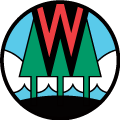Sportsmen and Sportswomen
- Webpage
Instructions for Bear Tooth Removal
The collection of teeth from hunter-harvested bears is a critical component of Wisconsin's bear management program. These teeth allow biologists to determine the population's age structure, the age when females first reproduce and consecutive cub…
- Webpage
Bear Registration and Tooth Submission
All successful bear hunters must register their bear harvest and submit two upper-premolar bear teeth to the department. These are legally required steps and provide critical data used to monitor the bear population and hunting activity. These…
- Webpage
Outstanding and Exceptional Resource Waters
Wisconsin has designated many of the state's highest quality waters as Outstanding Resource Waters (ORWs) or Exceptional Resource Waters (ERWs). Waters designated as ORW or ERW are surface waters that provide outstanding recreational opportunities,…
- Webpage
Lake Superior lake trout, splake and brook trout comparison
Lake Trout (top) Splake (middle) "Coaster" Brook Trout (bottom) Lake Trout (left) will have a deeply forked tail. Splake (middle) has a moderately forked tail. "Coaster" Brook Trout (right) has only a slightly forked tail. Splake has a…
- Webpage
Waterfowl Rules Process
Migratory Rules The migratory rules are different from other program ru
- Webpage
Fishing seasons
Opening day for Wisconsin fishing is traditionally the first Saturday in May. Season dates often vary by species and waterbody. Check The Guide To Hook And Line Fishing Season Dates, 2025-2026, for specifics of where you plan to fish.Fishing…
- Webpage
Fishing calendar for Lake Superior
This fact sheet on when is the best time to fish in Wisconsin for what species of fish and where is the best place to find them. Also, the typical fishing method you can use should help increase your chances of catching the fish.
- Webpage
Brule River fishery facts
The Bois Brule River is one of Wisconsin's best-known trout streams. At the time of European settlement (1850s) the Brule was already regarded as one of the finest brook trout fishing streams in the state. Wisconsin's settlement push reached the…
- Webpage
Lake Superior Outdoor Fishing Report – Dec. 10, 2025
Chequamegon BayIce is present along the entire Ashland shoreline from the head of the Bay to Second Landing north to Bono Creek. North of Bono Creek is open water. No ice fishing activities have been observed. This weekend's forecasted temperatures…
